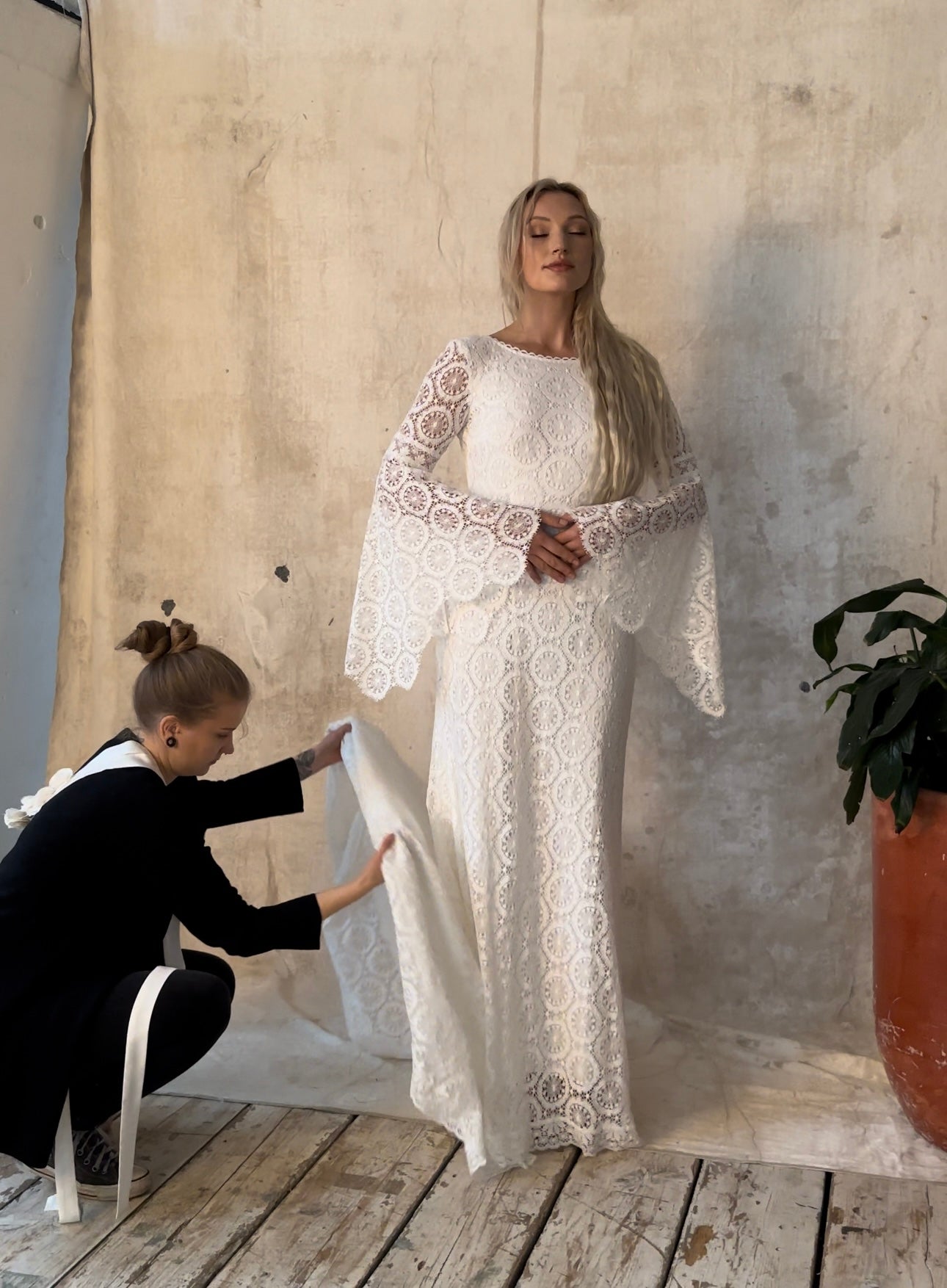From a fabric swatch to a bridal dress:
The design process of an Indiebride London wedding dress collection

Wedding dresses take hours and hours to make, but there is even more work going into the actual design process of a wedding dress collection. This process takes months and includes several phases interwoven together into quite a massive project. Let’s do a deep dive into how Indiebride London wedding dresses are designed.
Fabric sourcing
As a small business that uses sustainable materials and is not able to buy hundreds of metres of fabric, it all starts with finding the right materials. I have trusted fabric manufacturers and suppliers that I work with and usually choose fabrics from their collections. However, every year I do hours and hours of research online and visit at least one fabric fair to see what exciting new innovations and materials are available in the sustainable fashion industry and sometimes find great new manufacturers and suppliers to work with.
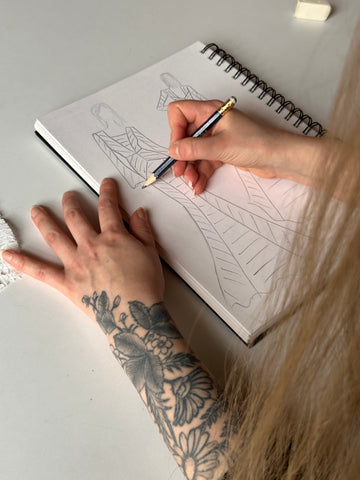
Concept
Many different concepts might have been in my, but once I have the fabrics more or less decided, I set on a concept. The latest collection, Prairie Song, for example, drew inspiration from the women of the wild west. My designs are loosely based on the concept that I have in mind, as I don’t want to be too restricted when creating new styles. To come up with a concept, I read books and magazines, watch movies and series, or just think about beautiful moments in my life or things that I enjoy doing. I basically keep my eyes and ears open wherever I go.
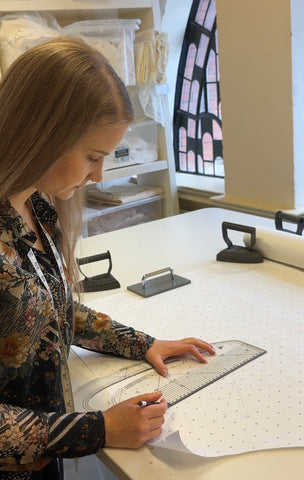
Research
After finding a suitable concept that works with the fabrics I want to use, and that makes me excited to create, I start doing research. I find imagery online, in books, magazines, etc. I look for the key features and details I want to incorporate in the collection I’m designing and write a list of ones I want to develop further to see if they would work. I always keep my eyes open for cool details that I can develop further to work in a wedding dress, make notes or doodle on a piece of paper (I never manage to keep all my notes in one sketch book). I sometimes embarrass myself by staring at people's clothes on the London tube for too long because they have an interesting detail in their blouse or coat, and I’m wondering how I could use that in a wedding dress.

Sketching and trials
I start with details and usually draw different types of sleeves, necklines, skirts, and tops I’m attracted to, find beautiful, and that fit my concept. I choose my favourite details that I want to incorporate in the collection and then design the rest of the dress around it. Some dresses start with a cool sleeve, some with a skirt detail. I do sleeve and top trials to see what I need to change to make the dress style work. For this, I use old sheets and tablecloths from charity shops.
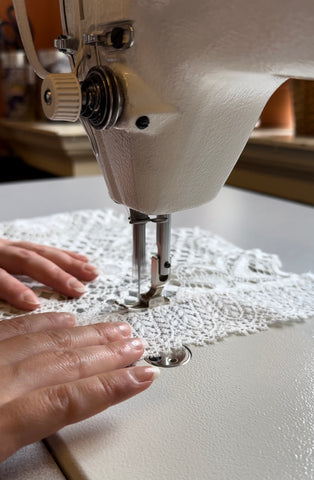
Pattern cutting
Once I’ve decided which styles I want to bring to life, I start cutting the patterns. I first make a copy of the block pattern and use that to make a draft that includes all the style lines. I then make a copy of each pattern piece, add seam allowances, and cut them out. This sounds simple but cutting a pattern actually involves a lot of mathematics, measuring, knowledge about suitable tolerances and most flattering cuts, drawing, taping, etc.
Making the sample dress
I then use the patterns to cut the fabric. Some designers use, for example, calico for the first sample. I use the actual fabric as I want to see exactly how the dress style will look when it’s ready. I sew the sample dress together, make any changes to the pattern if needed, and change the parts of the dress I need to get the result I want. While cutting the dress fabric, I note down the costing of the fabrics and the time that it takes to make the dress, as both of these affect the final price of the dress.
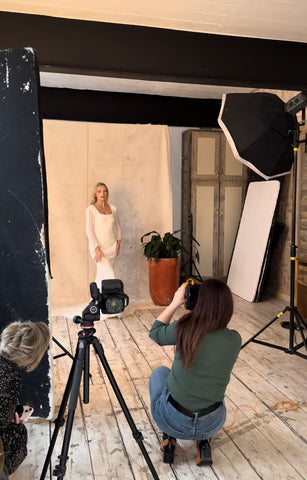
Grading
After the pattern is perfected, it is sent to be graded into sizes 8-20. Grading is done by a London based business with expertise, the required software to grade patterns and machinery to print them out. I choose to have the patterns graded on paper instead of card, as my facilities are too small to have all the card patterns hanging from rails. This means that when the patterns come from grading, I need to cut all the pattern pieces out. As many as 120 pattern pieces need to be manually cut out from the paper roll, and as you can imagine, this can take a few days.
Photography
After each dress style has gone through sketching and trials, pattern cutting, and sampling and is ready, the collection is photographed in a studio. These pictures will be added to the website, where all of you lovely brides can see them and decide whether to visit our showroom and try them on.
This is my process for creating a new Indiebride London collection. This process is unique to every designer. By the time we launch a new collection, I have been working on it for almost a year. I have circulated different concepts in my head, made many errors, experienced successes, and gone through many moments of despair and excitement. Much like being a business owner in general, the design process is a rollercoaster of emotions, but so worth it in the end.
- Miina -

